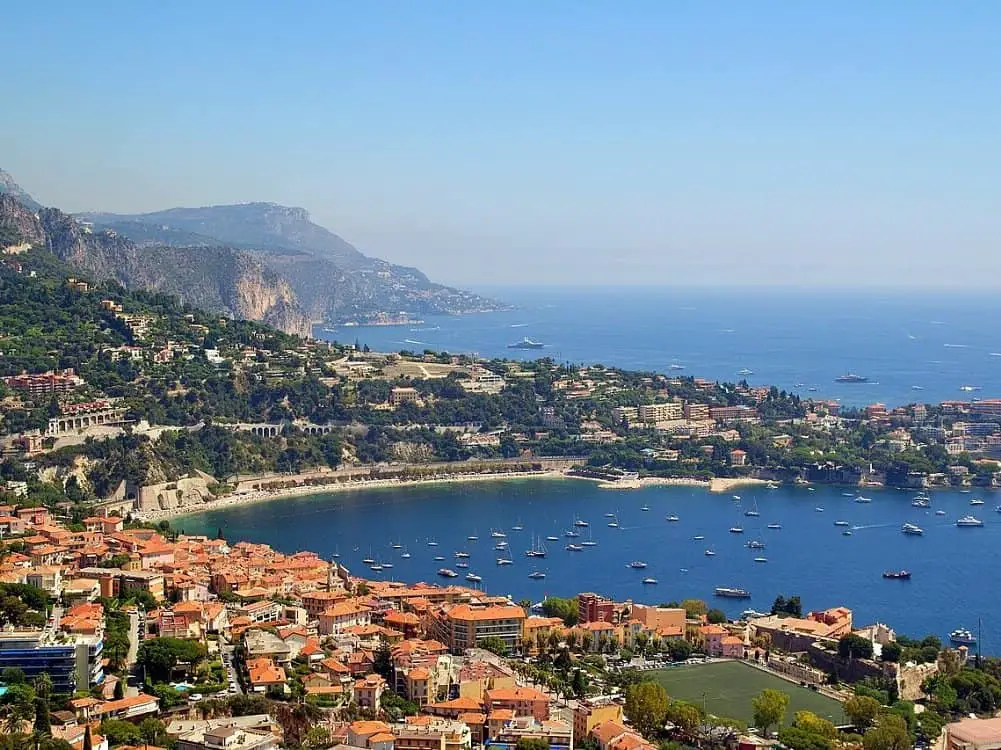Unique Parisian markets beyond the tourist traps offer a captivating glimpse into the city’s authentic soul. Venture beyond the crowded, well-trodden paths to discover hidden gems, where local vendors craft unique experiences, and where the true Parisian spirit thrives.
This exploration delves into five exceptional Parisian markets, highlighting their unique characteristics, local appeal, and the distinct experiences they offer. From culinary delights to local interactions, these markets reveal a side of Paris rarely seen by tourists, showcasing the vibrant tapestry of Parisian life.
Discovering Hidden Gems
Beyond the bustling tourist crowds, Paris boasts a wealth of local markets offering authentic experiences. These hidden gems often showcase the city’s vibrant community spirit, offering unique insights into Parisian life. Venturing off the well-trodden paths allows for a deeper connection with the city’s soul.Exploring these less-trafficked markets reveals a different side of Paris, offering a more intimate and genuine shopping experience.
The energy and atmosphere differ significantly from the popular tourist markets, allowing for a more immersive encounter with local culture.
Five Parisian Markets Beyond the Tourist Traps
This selection of markets represents a diverse range of Parisian experiences, highlighting the variety of local life beyond the typical tourist zones. Each market has a distinct personality and caters to different tastes.
- Marché des Enfants Rouges: Located near the Canal Saint-Martin, this market is easily accessible via the Canal Saint-Martin metro station. It offers a vibrant atmosphere, drawing a predominantly local crowd. The vendors here sell a wide range of products, including fresh produce, local cheeses, and artisanal goods. The lively energy of the market is a testament to its community appeal.
- Marché Bastille: Situated near the Bastille metro station, this market attracts a local clientele and features a diverse range of products. The market is known for its selection of fresh seafood, prepared meals, and local produce. A lively mix of vendors provides a distinct, local experience.
- Marché de Belleville: This market, located near the Belleville metro station, has a strong sense of community and a distinct bohemian feel. The market is popular for its unique selection of vintage clothing, artisan crafts, and local pastries. The atmosphere is a blend of laid-back charm and a local’s enthusiasm for the market.
- Marché des Enfants Rouges: Located near the Canal Saint-Martin, this market is easily accessible via the Canal Saint-Martin metro station. It offers a vibrant atmosphere, drawing a predominantly local crowd. The vendors here sell a wide range of products, including fresh produce, local cheeses, and artisanal goods. The lively energy of the market is a testament to its community appeal.
- Marché de la Butte-aux-Cailles: This market is nestled in the heart of the Belleville neighborhood, near the Abbesses metro station. Its local character shines through with its focus on fresh produce, regional delicacies, and artisanal breads. The atmosphere is friendly and inviting, fostering a sense of community amongst locals.
Comparative Analysis of Market Atmospheres
The difference in atmosphere between these markets and those frequented by tourists is noticeable. Tourist markets often feature pre-packaged souvenirs and standardized goods, whereas local markets showcase the unique character and diversity of Parisian life. The local markets offer a true glimpse into the daily routines and cultural preferences of the Parisian community. The customer demographics are markedly different, with a greater proportion of locals at these hidden gems.
The shopping experience is less rushed and more focused on genuine interaction with the vendors.
Market Features Summary
| Market Name | Transport Access | Vendor Types | Products | Atmosphere |
|---|---|---|---|---|
| Marché des Enfants Rouges | Canal Saint-Martin Metro | Produce, Cheese, Artisanal Goods | Fresh produce, cheeses, baked goods | Vibrant, local |
| Marché Bastille | Bastille Metro | Seafood, Prepared Meals, Produce | Fresh seafood, prepared meals, local produce | Lively, local |
| Marché de Belleville | Belleville Metro | Vintage Clothing, Crafts, Pastries | Vintage clothing, crafts, pastries | Bohemian, friendly |
| Marché de la Butte-aux-Cailles | Abbesses Metro | Produce, Regional Delicacies, Bread | Fresh produce, regional specialties, artisan bread | Friendly, community-focused |
Beyond the Boutiques

Parisian markets, beyond the tourist-laden avenues, offer a unique window into local life and craftsmanship. These hidden gems often showcase a wider range of products than the typical souvenir shops, revealing the artistry and ingenuity of Parisian artisans. Exploring these markets provides a richer, more authentic experience, fostering a deeper connection with the city’s soul.These markets are not simply places to buy trinkets; they are living embodiments of local traditions and craftsmanship.
Delving into the intricacies of these markets reveals a tapestry of stories woven into each item, a tangible link to the city’s history and its people.
Alternative Shopping Options
Beyond the typical tourist trinkets and souvenirs, these markets offer a wealth of alternative shopping opportunities. Customers can discover exquisite handcrafted jewelry, intricate leather goods, unique ceramics, and other artisanal products. These items often feature unique designs and techniques not readily available in mainstream stores, reflecting the specific skills and traditions of the local artisans. This makes them truly one-of-a-kind treasures.
Vendor-Customer Interactions, Unique Parisian markets beyond the tourist traps
The interactions between vendors and customers in these markets often exhibit a distinct cultural nuance. Vendors frequently engage in friendly banter and negotiations, creating a dynamic atmosphere that is far more personal than the impersonal transactions common in large tourist shops. This personal touch, characteristic of many Parisian markets, contributes significantly to the overall shopping experience. It often reflects a deep-rooted sense of community and mutual respect.
Pricing Structure Comparison
The pricing structure in these markets often differs significantly from that of tourist-oriented shops. While some markets may still have prices tailored for tourists, many vendors offer more competitive rates, reflecting the local cost of materials and production. This represents a significant value proposition for savvy shoppers, providing an opportunity to acquire high-quality, handcrafted items at more reasonable prices.
Product Range Comparison
| Product Category | Price Range (Approximate) | Vendor Type |
|---|---|---|
| Handcrafted Jewelry | €20-€200 | Independent Artisans |
| Leather Goods (Bags, Wallets) | €50-€500 | Small Workshops |
| Ceramics (Plates, Vases) | €10-€100 | Independent Potters |
| Wooden Toys and Sculptures | €15-€250 | Local Carvers |
| Textiles (Scarves, Clothing) | €20-€150 | Family-Run Businesses |
| Vintage Clothing | €10-€100 | Thrift Stores/Consignments |
The table above provides a concise overview of the variety of products available in these markets. These products stand in contrast to the mass-produced souvenirs often found in tourist areas. The table illustrates the wide range of quality and prices, highlighting the distinct value proposition of these markets. These are not simply items for sale; they are expressions of local artistry and heritage.
Culinary Delights
Beyond the iconic Eiffel Tower and bustling tourist hotspots, Parisian markets offer a unique culinary experience. These hidden gems unveil the heart of French gastronomy, showcasing local specialties and regional flavors. Exploring these markets allows for a deeper understanding of French culinary traditions, from the preparation methods to the specific ingredients used.These markets, often overlooked by tourists, provide a chance to savour authentic Parisian cuisine.
Vendors, passionate about their craft, offer a range of culinary delights. From artisanal cheeses to freshly baked pastries, the culinary scene comes alive, inviting you to indulge in the diverse tastes of the city.
Food Stall Offerings
Various food stalls in these markets showcase a diverse array of culinary experiences. The stalls are not merely about selling food; they are often small businesses, showcasing the dedication and skill of their proprietors. Each stall often has its own unique character, highlighting a specific type of cuisine or culinary tradition.
- Many stalls specialize in regional French cuisine, offering dishes reflecting the unique flavors of different French regions. Consider the Alsace region with its hearty, spiced dishes. These stalls typically use fresh, locally sourced ingredients, ensuring the authenticity of the food.
- Some stalls focus on specific culinary traditions, like crêpes, offering a variety of fillings, from savory to sweet. Other stalls highlight the artisanal production of charcuterie and cheeses, showcasing the meticulous processes involved in their creation. These stalls often offer samples, allowing you to explore the vast range of tastes.
- Many stalls highlight fresh produce and regional ingredients. The stalls, often featuring local farmers, display an abundance of seasonal fruits and vegetables, often highlighting the freshest and most flavorful options available. These stalls often incorporate these ingredients into their dishes, showcasing their versatility and taste.
Unique Culinary Experiences
Sampling local specialties and regional flavors is an essential part of experiencing the culinary essence of these markets. The experience transcends simply purchasing food; it’s about immersing yourself in the culture and history of French cuisine. The opportunity to interact with vendors, learn about their preparation methods, and understand the origins of ingredients adds a layer of depth to the culinary journey.
- The experience allows you to connect with the artisans behind the food, gaining insight into their craft. You can engage in conversations about their techniques, learn about their preferred ingredients, and understand the passion behind their work.
- Discovering these hidden culinary gems provides an opportunity to try regional specialties. Many vendors offer unique and flavorful combinations of ingredients that you might not encounter in typical tourist areas. This is where you find the true heart of Parisian cuisine.
- The markets often showcase unique preparation methods and ingredients that are integral to traditional French cooking. These methods, passed down through generations, often involve specific techniques that result in distinctive tastes and textures. Learning about these methods and the ingredients used adds to the overall experience.
Preparation Methods and Ingredients
Traditional French cooking often involves meticulous preparation methods. Vendors often use fresh, locally sourced ingredients. The use of fresh herbs, spices, and regional products contributes to the distinctive flavors of the cuisine.
- Many vendors use traditional French cooking methods, such as braising, roasting, and grilling, to bring out the best flavors in their dishes. These methods often involve long cooking times and specific techniques to ensure the food is tender and flavorful.
- The use of fresh, seasonal ingredients is a hallmark of French cuisine. Vendors often source ingredients from local farms, ensuring the freshest and most flavorful options available. This dedication to quality and freshness is a cornerstone of the culinary experience.
- The incorporation of regional specialties is an integral part of French cooking. The dishes often reflect the unique flavors and traditions of specific regions of France. This diversity and attention to regional ingredients enhance the overall culinary journey.
Cuisine, Vendor Specialties, and Price Ranges
| Food Type | Preparation Method | Vendor Specialty | Average Price |
|---|---|---|---|
| Fresh Fruit & Vegetables | Raw, Salads | Seasonal Produce | €5-€15 |
| Artisan Cheese | Aged, Cut | Local Cheeses | €8-€25+ |
| Crêpes | Pan-fried | Sweet & Savory | €5-€10 |
| Baguettes & Pastries | Baked | Freshly Made | €2-€5 |
| Charcuterie | Cured, Smoked | Assortment | €10-€30+ |
Local Experiences: Unique Parisian Markets Beyond The Tourist Traps
Beyond the tourist crowds and curated boutiques, Parisian markets offer a profound glimpse into the city’s soul. These hidden gems are not simply places to shop; they are vibrant hubs where generations of Parisians connect, sharing traditions and forging community. These local experiences offer a deeper understanding of the city’s rhythm and character.These markets are more than just a collection of stalls; they are living testaments to the social fabric of the local communities.
The interactions between vendors and customers, the cultural significance of the markets, and the integral role they play in daily life offer unique insights into the Parisian way of life.
Vendor-Customer Interactions, Unique Parisian markets beyond the tourist traps
Parisians value genuine connections. Market interactions often involve extended conversations, not just transactions. Vendors are not simply sellers; they are trusted members of the community, often known by name and recognized for their expertise. This personal connection creates a sense of shared history and mutual respect. The exchange isn’t just about buying and selling; it’s about shared stories and local knowledge.
Cultural Significance of the Markets
These markets often hold a deep historical significance. Many have been in operation for decades or even centuries, passing down traditions and knowledge from one generation to the next. The specific history of a market, whether it revolves around a particular craft, a historical district, or a cultural heritage, significantly shapes its character. This history, interwoven with the present, gives the markets a sense of enduring legacy.
Markets in Daily Life
These markets aren’t just weekend attractions; they are integral parts of daily life for many Parisians. They provide fresh produce, artisan goods, and a communal space for interaction. The markets become a gathering place for neighbours, a place to share news, and a source of local knowledge. This daily connection reinforces the markets’ role as essential community hubs.
Historical Context, Community Significance, and Interactions
| Historical Context | Community Significance | Interactions |
|---|---|---|
| The Marché des Enfants Rouges, a historic market in the 11th arrondissement, dates back to the 1800s, evolving alongside the neighborhood’s growth and reflecting changing culinary trends. | The market is central to the daily lives of local residents. It provides a reliable source of fresh produce, artisanal cheeses, and baked goods. | Vendors are often known personally by regulars, who appreciate the quality and trust the vendors’ expertise. |
| The Marché Bastille, located in the vibrant 11th arrondissement, is steeped in history. Its presence has been deeply intertwined with the district’s economic and social development, evolving from a simple market to a bustling hub. | It provides a crucial link between producers and consumers, fostering a sense of community and shared experience. | Vendors engage in friendly banter and offer advice to customers, fostering a sense of trust and shared knowledge. |
| The Marché de la Rue Mouffetard, located in the Latin Quarter, has a rich history, deeply rooted in the neighborhood’s student and artistic traditions. | The market provides access to diverse culinary offerings, including international flavors, reflecting the area’s cultural richness. | Vendors often have deep knowledge of local produce and culinary traditions, sharing insights with customers. |
Market Atmosphere and Visuals

Unveiling Parisian markets beyond the typical tourist throngs reveals a tapestry of unique atmospheres. These hidden gems offer a captivating glimpse into local life, far removed from the often-crowded, commercialized experiences. Their distinctive characteristics, from the architecture to the sensory experiences, provide a deeper understanding of the city’s diverse neighborhoods.These markets, while often less overtly advertised, are rich in character.
The visual and sensory elements, including the architectural style, layout, and the sounds, smells, and colors, contribute significantly to the overall experience. Understanding the ideal times to visit these markets allows for an optimal balance between enjoying the atmosphere and navigating potential crowds.
Market Ambiance Descriptions
The ambiance of these Parisian markets varies significantly, reflecting the distinct character of each neighborhood. From the bustling energy of a covered market to the serene charm of an open-air farmers’ market, each offers a unique sensory experience. These variations in atmosphere are influenced by the market’s location, its historical context, and the local community’s traditions.
Beyond the usual tourist throngs, Parisian markets offer a wealth of unique experiences. Seeking budget-friendly treasures? Check out these hidden gems in Paris for budget travelers here. From local produce to artisan crafts, these markets often provide a more authentic Parisian experience, a real contrast to the well-trodden tourist paths.
Sensory Experiences
The markets offer a wealth of sensory experiences. The lively chatter of vendors, the aroma of freshly baked bread and exotic spices, and the vibrant colors of produce and flowers paint a vivid picture. The rhythmic sounds of chopping vegetables or the gentle clinking of coins combine to create a dynamic soundtrack. The visual appeal of the markets is undeniable, with meticulously arranged produce displays, artisanal crafts, and the colorful fabrics often found at these markets.
Ideal Visit Times
The best time to visit each market often depends on the level of crowds and the desired atmosphere. Weekdays, early mornings, or even late afternoons can offer a more intimate experience, while weekends might bring a lively buzz. Understanding these subtle differences can enhance the enjoyment of your market exploration.
Market Ambiance Table
| Market Name | Architectural Style | Atmosphere | Ideal Visit Time |
|---|---|---|---|
| Le Marché des Enfants Rouges | Historic, Parisian-style, with covered arcades | Bustling, vibrant, with a mix of fresh produce and local crafts | Weekdays, early morning (7-9 am) or late afternoon (4-6 pm) |
| Marché de Belleville | Traditional Parisian building, with open-air sections | Lively, diverse, with a strong local feel, featuring ethnic foods and local crafts | Weekends, late morning (10 am-1 pm) or early evening (6-8 pm) |
| Marché Bastille | Modern, open-air design with modern touches | Trendy, stylish, with a focus on fresh produce, artisanal goods, and food stalls | Weekdays, midday (12-2 pm) for a less crowded experience |
Final Conclusion

In conclusion, venturing beyond the tourist traps in Paris unveils a hidden world of vibrant markets, offering authentic experiences that connect with the heart of the city. These markets are more than just places to shop; they are vibrant hubs of local life, where culinary delights, unique crafts, and rich cultural interactions create an unforgettable Parisian adventure.
Query Resolution
What are the typical price ranges for food at these markets compared to tourist areas?
Generally, prices in local markets are more affordable than tourist-heavy areas. Vendors often offer better value for local specialties and regional flavors.
What types of public transportation are convenient to reach these markets?
Each market’s proximity to public transport is detailed in the accompanying table. Metro lines, bus routes, and tram lines are commonly used for access.
Are there any specific cultural nuances to be aware of when shopping in these markets?
Some markets might have specific customs or traditions regarding bargaining or interactions with vendors. It’s always a good idea to be respectful and observe local customs.
What are the best times to visit these markets to avoid large crowds?
Ideal visit times are often early mornings or mid-week. Specific times for each market are detailed in the accompanying visual representations.





Leave a Reply